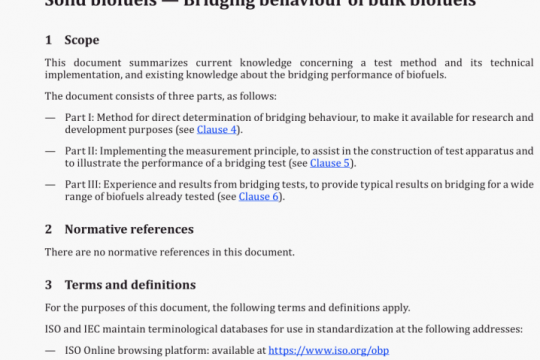ISO 23952 pdf free download
ISO 23952-2020 pdf free download.Automation systems and integration一Quality information framework [QIF)一An integrated model for manufacturing quality information.
1 Scope of the integrated model and fundamental principles
1.1 Contents of this document
This clause describes the general content and structure of the entire QIF information model. It describes the highest level data structures of QIF, that are expanded in Clauses 6 through 12 using data dictionaries and XML schema files. All QIF XML schema files can be found at www.qif standards .org.
This clause also describes practices for forming QIF instance files, called documents, that support quality workf low scenarios. Its focus is to show how the QIF information model, and data formed into XML instance files, support the entire scope of model based definition manufacturing quality workflow. It describes how the information model is partitioned among the XML schema files and contains all terms used in the subject area clauses.
The purpose of this clause is to orient potential users of QIF to the organization of the information model to make their study of the details more rewarding and efficient. It should also help solution providers and users to evaluate QIF for their uses, without needing to go to the lowest technical details of the XML schemas. The information model narrative focuses on the approach to modeling the core data structures of QIF, which model the content of ASME GD&T and ISO GPS, and the plans and results data elements defined in Dimensional Measuring Interface Standards (DMSI) ISO 22093 and ANSI/DMSC DMIS 5.3. The material on XML practices describes consistent design practices to be used by QIF working groups who will be designing new schemas. It should also help data processing experts to write software that writes and reads manufacturing quality data using the XML schemas.
1.2 Scope of the QIF Version 3.0 information model
Figure 1 shows a high level view of the QIF information architecture for version 3.0 standardization. At the core of the QIF architecture is the reusable QIF library which contains definitions and components that are referenced by the application areas, thereby ensuring interoperability and extensibility. Around the QIF library core Figure 1 shows the six QIF application area information models, MBD, Plans, Resources, Rules, Results, and Statistics. The DMIS application, which references the DMSC’s Dimensional Measuring Interface Standard (OMIS), is a placeholder for a future QIF execution model that is not a part of QIF. Each QIF application model reuses the QIF Library. QIF data is contained in a QIF Document. The order of generation of QIF data in an enterprise generally proceeds clockwise around the diagram, beginning with QIF MBD and ending with QIF Statistics. Use of the QIF information model does not place any requirements on a user’s workf low architecture.
The flow of QIF data typically starts with generation of CAD + PMI data exported as QIF MBD application data. Then Quality planning systems import the MBD and generate measurement requirements as part of the Plans of “what” to measure, then with import of Resources and Rules information, Plans generate an inspection plan on “how” to verify. Then Programming systems import Plans to generate DME-specific programs, or general instructions to guide inspection. Dimensional measurement equipment executes programs and evaluates characteristics of a single manufactured part or assembly and exports the measurements as Results. Analysis systems, typically performing statistical process control, import single parts Results and generate analysis of multiple part batches as QIF Statistics data.




